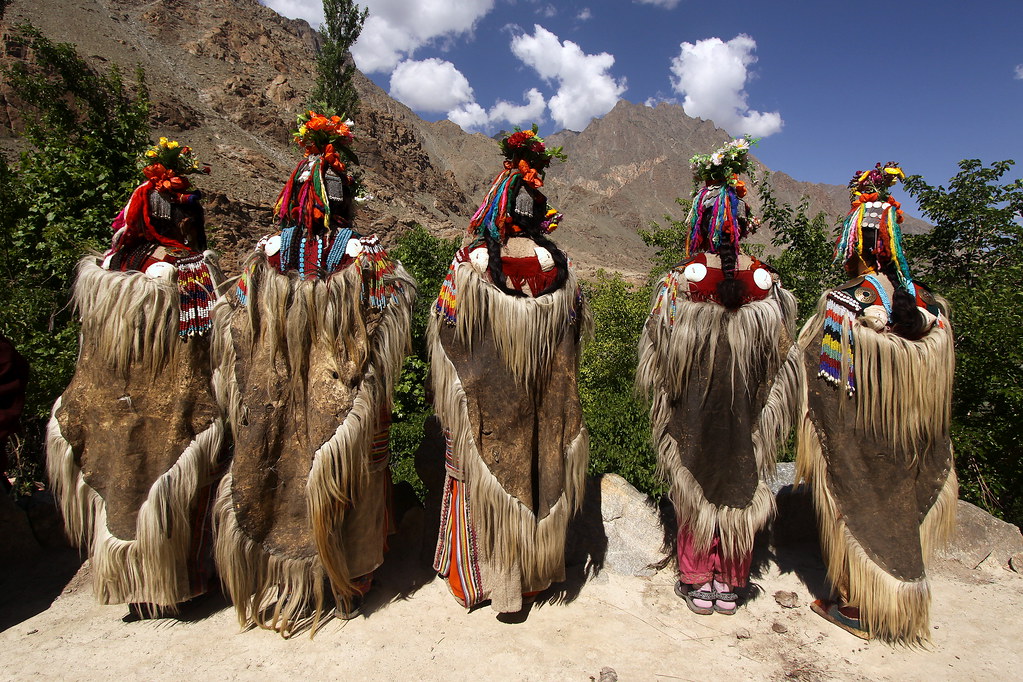'Superior Aryan race' in Kargil

The Batalik area of Kargil adjacent
to the Line of Control is famous for the strange tribes known as Drokhpas
believed to be the only surviving pure Aryan Race.
There are many theories about the
origin of these tribal people who are unlike other inhabitants of Ladakh. The
area is approachable both from Leh through Khalsi and from Kargil through
Batalik. Earlier tourists were allowed only through Khalsi up to Dah and Hannu.
Now they can visit these places through Kargil also.
The beautiful Darchik village in
Batalik is nestled on the banks of the mighty Indus and across the Pakistan
border. Its inhabitants are the last surviving members of the pure Aryan race
in Ladakh. While not as old as the Harrapan and Mohenjadaro villages, Darchik,
along with the peer villages of Dah and Hannu, are dated to somewhere between a
1,000 and 1,200 years old.
People there are called Drokhpas or
High Landers and are said to have migrated from Dardistan, somewhere west of
Afghanistan. Their occupation involves agriculture and animal husbandry while
their main source of income comes from selling apricots and grapes, which grow
in plenty here, to the markets in Kargil and Leh. Structurally, their houses
are just stone and wood.
There are five villages of Drogpas
in the Kargil district of Dah, Hannu, Garkon, Darchik and Biama, around 260
kilometres from Srinagar. These people have very strange customs and a
different lifestyle. They are allergic to cow. They do not eat eggs and
chicken. The source of their main supply of meat and milk is goat. They eat
goat cheese and store it for years. They worship deities whom they call Lha and
Lhu. Their deities come from within the earth as well as from the sky and these
also have some connection with fairies. These people trace their Aryan
ancestors to the Indus Valley and their villages boast of extensive
anthropological and ethnographic links.
The most important occasion to know
their true history is the harvest festival, which they call Banono.
During that the Drogpas wear
colourful and traditional outfits. The Drogpas have been an attraction for
tourists and anthropologists because of their colorful lifestyle, sheepskin
clothing and rich jewelry. The area grows grapes from which these people make
excellent wine. This is an event full of gaiety.
On this occasion people from
different villages assemble in one place and celebrate for five days. The
festival begins with the head of the tribe relating the story of their arrival
in Ladakh. The festival is a place to drink, dine, dance and make free love! It
is reported that many German families had been visiting the area to share their
love with pure Aryan blood!
The head of the tribe recites 18
hymns relating to their history according to which they are supposed to have
come through Gilgit. On the other side of the border, there is a similar tribe
called Kalash. In fact, there are strong theories that these tribes living on
the two sides of the border in Ladakh, including the Hunzakuts, are remnants of
Alexander’s Army.
Some research scholars from
Macedonia have conducted studies on the Hunza people and claim they are
Macedonians who remained behind after Alexander’s Army left the area.
Apparently, the people inhabiting these villages are distinctly of
non-Mongoloid stock. Some of these people are very much like Europeans. Good
looking, with aquiline noses and quite a few of them are blonde!
No comments:
Post a Comment